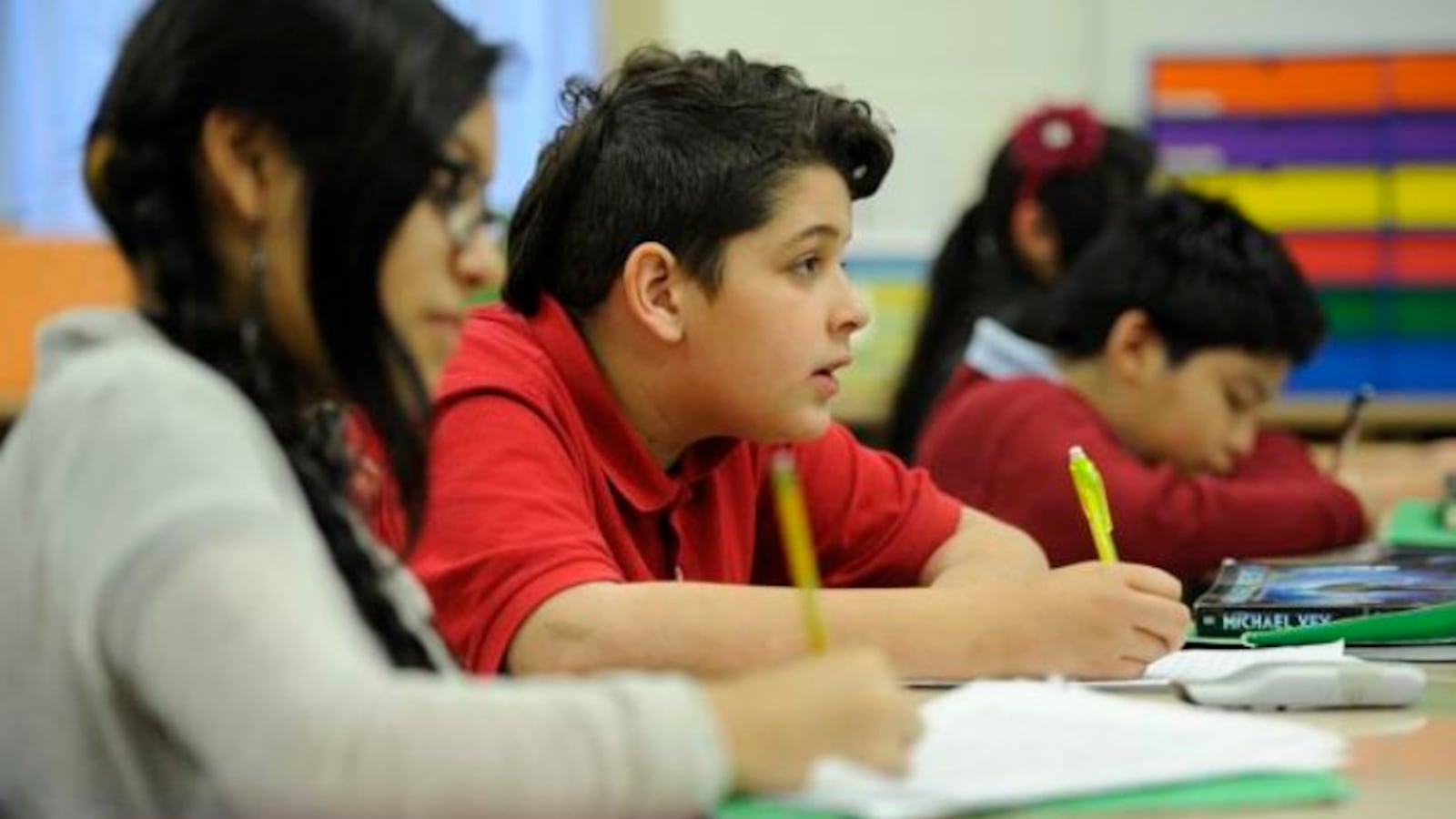New York is about to have a lot more freedom to craft education policy.
The Every Student Succeeds Act, which President Obama signed last week, won’t change anything right away in New York state. But ESSA, which replaced the No Child Left Behind Act, hands authority from the federal education department to the states, which could eventually lead to important shifts in how the state tests students and what happens to struggling schools.
Most states, including New York, already had waivers that allowed them to operate outside No Child Left Behind’s rules. (Those will expire as next school year begins.) In New York, policymakers had also pushed even further than the old law required in recent years, sparking backlash around state testing, teacher evaluations, and the Common Core standards — and prompting officials to begin backing away from many of those shifts even before ESSA’s passage.
As those debates continue, here are a few ways ESSA might change things in New York.
Standardized testing
Students in grades 3 through 8 will still have to take state English and math tests, and high school students will still take Regents tests.
New York will still have to report those results and the results for certain student groups, such as those with disabilities or who are still learning English.
But the new law gives states new freedom to change what their tests look like. States are allowed to use computer-based tests that adapt to students’ levels, for example. The law also encourages states to measure student achievement in multiple ways — including with portfolios of student work or extended performance tasks.
State officials have been signaling their support for that kind of flexibility recently too.
A report by a Gov. Cuomo-appointed task force released last week suggested that teachers be allowed to assess students in new ways. In November, state education commissioner MaryEllen Elia suggested creating an advisory council to develop recommendations for those kinds of assessments based on performance tasks.
Struggling schools
The new law will still require New York to track school performance and progress. The state will also still have to intervene at the bottom 5 percent of schools and at high schools with high dropout rates.
But it will now be up to New York to decide exactly how to identify that bottom group and how to try to improve them.
New York state has been identifying the bottom 5 percent of schools primarily by state test scores. When it intervened, officials chose one of a few preset federal turnaround policies, which required schools to do things like make staff changes or redesign the school day.
Under the new law, states are allowed to make some of their own choices about how they calculate which schools are struggling. The factors could include test scores, graduation rates, and — in a shift — measures of school climate and safety, student engagement, or completion of advanced coursework, with academic factors getting the most weight.
The new law will also allow New York to devise its own school improvement strategies, which could differ from the traditional turnaround models. (The state will have to keep supporting its “priority” and “focus” schools identified by the current formula until their new plans kick in.)
None of that guarantees New York will adjust its current strategy, though.
“This is all going to be dependent on how New York state changes things,” said Mike Hansen, the deputy director of the Brown Center on Education Policy at the Brookings Institution. “If they just use the current business model to intervene in low-performing schools, than they may be doing the exact same thing they’ve been doing under the waiver.”
Teacher evaluations
New York’s promise to overhaul its teacher evaluation systems to incorporate student test scores in 2010 helped win millions in Race to the Top federal funding and a waiver from No Child Left Behind.
The new education law does not address teacher evaluations at all, leaving state officials free to make big changes without concern about losing federal funding.
Those changes are on the way. On Monday, the Board of Regents voted to stop using state test results in teacher evaluations until the 2019-20 school year.
“If you believe that we were required to do all of that by federal law, that rug has now been pulled out from under them,” said David Bloomfield, an education professor at Brooklyn College and the CUNY Graduate Center, referring to New York’s state tests and teacher evaluations. “The basis for those requirements has now been eliminated.”

